The Guide to
Austin-area Birding Sites
Good places to see birds in and around Austin
East Areas
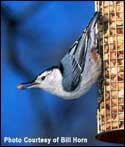
15. Webberville
County Park -
(512) 473-9437 (General
number for Travis County
parks)
Location: From the intersection
of U.S. Highway 183 and
FM 969 (Martin Luther
King, Jr. Blvd.), go east
on FM 969 for 14.5 miles
(note: east of U.S. 183,
the name of FM 969 changes
to Webberville Rd.). Turn
right (south) onto Webberwood
Dr. and follow the signs
for 0.6 mile to the Park
entrance.
Habitats: Parkland with
large, scattered Pecans;
riparian woodland along
the Colorado River. Good
for migrants, especially
in spring. Several typically
eastern birds are regular
nesters here, including
Red-eyed
Vireo. White-breasted
Nuthatch (rare in the
Austin area) has also
nested. Among other rarities
found here in the past:
Yellow-green
Vireo.
Facilities: Trails (wheelchair
accessible), restrooms,
water fountains, picnic
area.
Further
exploration: En
route to Webberville Park,
you will pass Little
Webberville Park in the town of Webberville;
since this Park also fronts
on the Colorado River,
it might repay a visit
during migration. Continuing
east on FM 969 for 0.8
mile past Webberwood Rd.
brings you to the bridge
over Coleman Branch; Cave
Swallows sometimes nest
under this bridge. Park
cautiously.
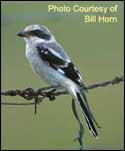
16. Hornsby
Bend Biosolids Management
Facility -
2210 South FM 973, Austin
TX 78725, (512) 929-1000
Location: From the FM 969/U.S.
Highway 183 junction, go
east on FM 969 for 4 miles
to its intersection with
FM 973 (note: west of U.S.183,
FM 969 is known as Martin
Luther King, Jr. Blvd.;
east of U.S.183, it is Webberville
Rd.). At the FM 969/FM 973
intersection, turn right
(south) onto FM 973 and
follow it for 3.2 miles;
the entrance to Hornsby
Bend will be on the right.
Hornsby Bend can also be
accessed from Texas Highway
71: Go 1.6 mile east of
the main entrance to Austin-Bergstrom
International Airport, turn
left (north) onto FM 973,
and follow FM 973 for a
mile; the entrance to Hornby
Bend will be on the left.
Follow the entrance Rd.
for 1/4 mile to just before
the gate, then take the
road on the left which leads
up onto the levee. The facility’s
lagoons can be viewed from
atop the levee, and trails
to the Colorado River can
be accessed from marked
points along the levee.
Habitat: The
best and most frequently
birded site in the Austin
area. More than
350 species have been recorded
here. The Hornsby Bend complex
contains four old sewage
lagoons, woods along the
Colorado River, and fields.
Be prepared for unpleasant
odors and summer heat and
humidity. Insects, though
abundant and sometimes annoying,
seldom bite. Water levels
determine which birds are
found in which lagoon, as
well as overall numbers
present; at the present
time (1999), Lagoon 1 West
is the best area for shorebirds,
Lagoon 2 is best for ducks.
In the near future, Lagoon
3 may be reflooded to attract
shorebirds. Mudflats, drying
basins, and short-grass
fields usually attract thousands
of shorebirds during migration
(late March to mid-May and
July through October). Western,
Least, and Pectoral
sandpipers are the most common, though
42 shorebird species have
been recorded (including
such rarities as Northern
Jacana, Ruff, and Red
Phalarope);
Black-necked
Stilts and
Killdeer breed. Osprey and
Peregrine
Falcon overwinter,
as do thousands of ducks
and coots from November
to March; Northern
Shoveler is the most common species.
Black-bellied
Whistling-Ducks and Wood
Ducks nest nearby,
bringing ducklings to the
lagoons in early summer.
Several non-native species
of waterfowl have been released
here as well. Swallows are
often abundant during migration;
flocks sometimes include
a few Cave
Swallows. Loggerhead
Shrikes and Dickcissels nest in nearby fields. Migrant,
summering, and wintering
songbirds are common along
riverside trails during
the appropriate seasons.
Resident species of the
riparian area include Red-shouldered
Hawk; among the summer nesters
is Indigo
Bunting. Some
of the many rarities seen
at Hornsby Bend over the
years: Pacific
Loon, Magnificent
Frigatebird, Whooping
Crane,
Black
Skimmer, Fork-tailed
Flycatcher.
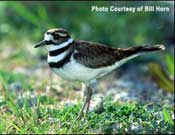
Facilities: For
orientation to the Hornsby
Bend complex, consult the
main kiosk located next
to the parking lot outside
the Center for Environmental
Research (the building near
the entrance to the facility).
A bird checklist for the
facility is available at
the CER Main Kiosk, as are
other literature and the
visitors’ register.
In addition to the main
kiosk, there are three kiosks
atop the levee. The log
of recent bird sightings
is in the mailbox next to
the first levee kiosk. An
observation blind is planned
for Lagoon 2. A book about
the birds of Hornsby Bend,
by Rob Fergus, is in preparation
(University of Texas Press).
The lagoons and riverside
trails (mostly wheelchair
accessible, with some assistance)
are open from 6 a.m. to
8:30 p.m. year round. Restrooms
and water fountains are
available inside the CER
Monday through Friday, from
7 a.m. to 4 p.m. Web site:
http://www.hornsbybend.org.
Note: Industrial processes
and construction work are
ongoing at Hornsby Bend,
where Dillo Dirt soil amendment
is produced. Avoid these
areas – stay on top
of the levee or on marked
trails at all times. Comply
with barricades. Do not
interfere with facility
workers. When parking, do
not block the road. Following
these rules will help ensure
continued access to the
Hornsby Bend complex.
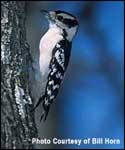
17. Lake Walter E. Long Metropolitan Park * (Decker Lake) -
6614 Blue Bluff Rd., (512)
926-5230
Location: Exit U.S. Highway
183 at Loyola Ln. and follow
Loyola east for 3.5 miles
to the intersection with Blue
Bluff Rd. (note: east of FM
3177 [Decker Ln.], Loyola
Ln.’s name changes to
Decker Lake Rd.). Turn left
(north) onto Blue Bluff Rd.
and follow it 0.1 mile to
the Park entrance.
Habitats: Open lake; some
reedbeds. Mesquite parkland.
Oak woods. Conifer plantations.
The lake often hosts waterbirds,
though seldom in large numbers.
Migrant landbirds are occasionally
numerous. Among the resident
birds are Ladder-backed
Woodpeckers,
more typically found farther
west; Downy
Woodpeckers also
occur here. The marshy area
east of the lake, between
the dam and FM 973, may support
such species as Common
Yellowthroatand Swamp
Sparrow during migration
and winter.
Facilities: Map, trails, restrooms,
water fountains, picnic area.
Often crowded; early arrival
is best (the park opens at
6 a.m.). Entrance fee.
Further
exploration: Return
to Decker Lake Rd., turn left,
and follow Decker Lake Rd.
to FM 973. Turn left (north)
onto FM 973 and follow it
for 2.6 miles to Bloor Rd.
(en route, you may want to
check the water impoundments
in the Decker Creek area;
if you do, use extreme caution
in parking). Turn left (west)
onto Bloor Rd. Over the next
7/8 mile, check the ponds
on the right side of the road
for waterfowl (Hooded
Mergansershave been seen in fall and
winter). This is also a good
area for wintering sparrows.
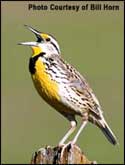
18. Walnut
Creek Wasterwater Treatment
Plant - 7113
FM 969, (512) 927-4000
Location: On the south
side of FM 969, 0.8 mile
east of its intersection
with U.S. Highway 183
(note: west of U.S. 183,
FM 969 is known as Martin
Luther King, Jr. Blvd.;
east of U.S.183, it is
Webberville Rd.).
Habitats: Most of the
facility is closed to
the public, but pay a
visit to the ornamental
pond in front of the administration
building. Least
Grebes have occurred here several
times but are very rare,
and Neotropic
Cormorants are sometimes present
in late spring. Hooded
Mergansers have been found
during fall and winter.
Several non-native species
of waterfowl have been
released here as well.
Also check the trees surrounding
the pond (Vermilion
Flycatcher has been recorded), as
well as surrounding fields
(where both Eastern
and Western meadowlarks – but
mostly the former – occur
during winter). See also
Site
20.
Facilities: Restrooms
and water fountains inside
the administration building.
Further
exploration: On
weekends only: From the
entrance to the Walnut
Creek Wastewater Treatment
Plant, go west on FM 969
for 0.2 mile and park
in the pullout on the
left (south) side of the
highway, just west of
Walnut
Creek. Do not block
traffic. Walk the path
paralleling the creek.
Be careful not to trespass
on adjacent private land.
A good area throughout
the year for woodland
birds. Great
Horned Owls are often heard at dusk,
especially during December
and January.
Austin-area Birding Sites
Texas Parks and Wildlife Department
4200 Smith School Road
Austin, TX 78744
or send a message to: nature@tpwd.texas.gov